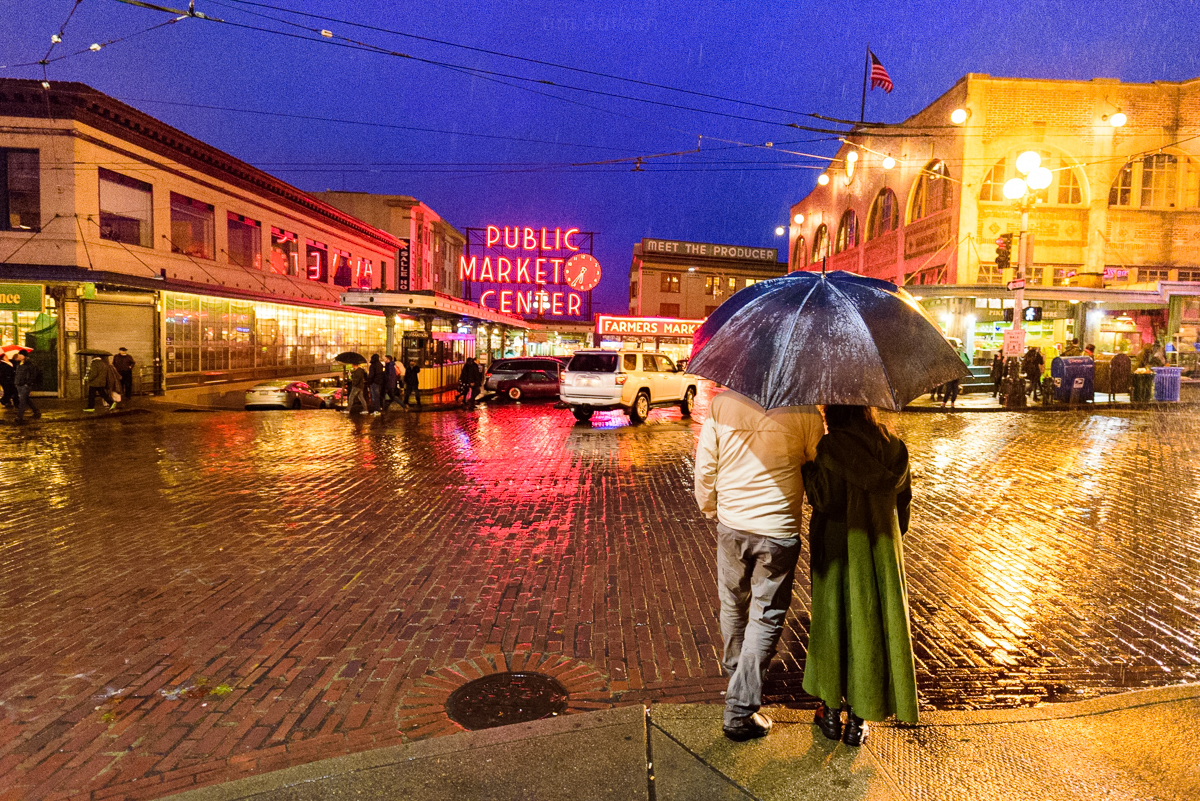 If you want to get a neighborhood’s attention, just talk streetlights! Nothing seems to say “customer service” louder than the working condition of streetlights in your neighborhood.
If you want to get a neighborhood’s attention, just talk streetlights! Nothing seems to say “customer service” louder than the working condition of streetlights in your neighborhood.
By: Seattle City Councilmember Bruce Harrell and
Seattle City Light Superintendent Jorge Carrasco
If you want to get a neighborhood’s attention, just talk streetlights! Nothing seems to say “customer service” louder than the working condition of streetlights in your neighborhood.
Did you know that Seattle City Light actually got its start because of the need for streetlights? The 1869 charter authorized the municipal government to provide streetlights, but it would take another four years – not until New Years Eve of 1873 – did the first coal gas-fired streetlight emerge in Pioneer Square. It was in 1886 when the first electric lights were installed in Seattle. There actually is quite a bit of history around Seattle’s streetlights. Soon, Historylink (www.historylink.org) will have a hard-copy book detailing City Light’s history that includes the story of streetlights. This is thanks to the tireless efforts of the late Walt Crowley and with the urgings of City Councilmember Nick Licata.
We know streetlights are the lifeline for a vibrant community – necessary to both the residential and commercial areas of any city. We understand how critical streetlights are and how passionate our neighbors are when streetlights go dark and unrepaired for long periods of time. We understand that a dark area caused by burned out streetlights can be a public safety issue and well-lit streets improve safety.
We have heard your concerns and have moved quickly to address problem streetlights. In fact, there are three major efforts underway to ensure that our neighborhoods have fully functioning lights. It’s a safety issue that needs to be addressed and it is our mission to ensure that turn-around times on repair are less than 10 days, keeping burned out streetlights to a minimum..
In 2009, the City Council’s Energy and Technology Committee looked at the pressing need for City Light to get caught up on repairing or replacing non-functioning streetlights. At one point in early 2009, as many as 8,000 streetlights were out of service and, at the time, it was estimated it could take anywhere from six to nine months to get necessary repairs made. That was unacceptable.
As a result, the Council acted to swiftly provide the funds needed to speed up the work. Today, we are caught up on the backlog. However, on any given day, we will receive between 50 – 100 streetlight reports. So there are still lamps in the queue that need work. Right now, it takes less than 10 days to fix a reported streetlight that’s out. If the repair will take longer than that, City Light notifies the customer of the delay, including what the problem with the light is and how long it will take to fix.
The second part of the answer to streetlight maintenance is a four-year “re-lamping cycle.” What this means is City Light has split its service territory into four sectors and is re-lamping every streetlight in a sector in one year. In the first year, 2008, City Light re-lamped its southern-most service area, replacing about 20,000 lamps. In 2009, they re-lamped the rest of the area south of Denny Way. We found some 1,300 streetlights that required more work than simply replacing the lamp. These are lights that weren’t reported to us previously by customers. That backlog has been reduced to a less than two hundred that are waiting for additional parts in order to complete the repairs.
This year, City Light will move north of Denny to 65th; and in 2011, the rest of the service territory north of 65th will be completed. The process is designed to start again in 2012.
But there is more good news to share. Simultaneously with the stepped-up maintenance work, the Council has approved City Light’s acceptance of federal stimulus dollars to invest in a program that would replace the existing high pressure sodium (HPS) lights with brighter, longer-lasting light emitting diode (LED) lights. Initially, 5,000 LED streetlights will be installed. Eventually, all of the 80,000 streetlights will be replaced.
Rather than a four – six year life-span for an HPS streetlight, City Light will be able to reduce the frequency of lamp replacements with the 12 – 15-year cycle of an LED streetlight.
Right now, City Light is testing various types of LED lamps to determine light quality. City Light’s Lighting Design Lab is evaluating comments received from the pilot neighborhoods and providing feedback to lamp manufacturers to identify the most versatile, standard streetlight available. A variety of factors are taken into consideration to arrive at the best lamp alternative. For instance, how the streetlight will be used and where it will be use are taken into account.
What this means to you and your neighbors is a more reliable, longer-lasting streetlight – and one that will be repaired within a reasonable amount of time.
We encourage you to follow our progress at www.seattle.gov/light/streetlight . Please feel free to contact us if you have any questions. Bruce.harrell@seattle.gov or respond.scl@seattle.gov